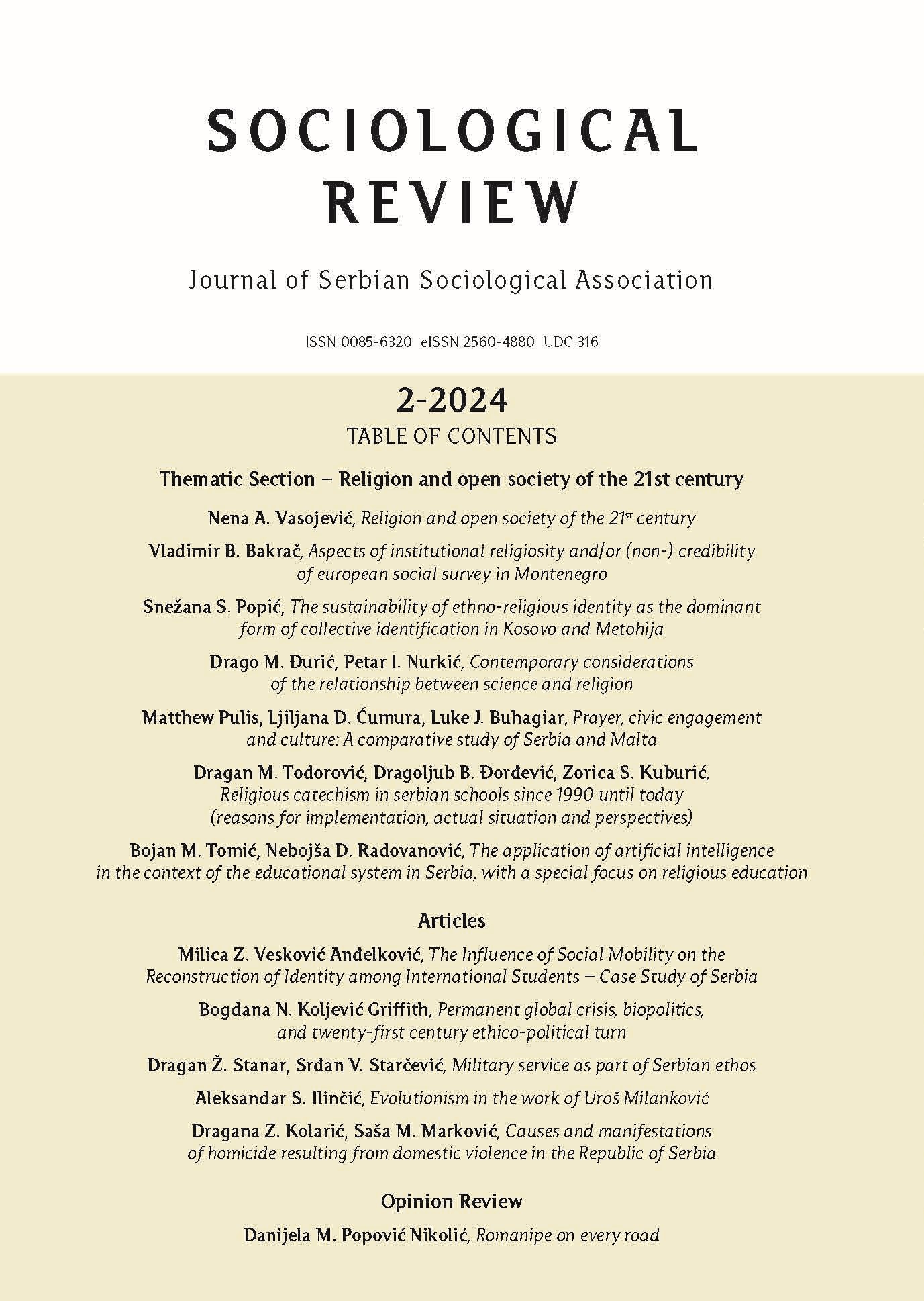The sustainability of ethno-religious identity as the dominant form of collective identification in Kosovo and Metohija
The sustainability of ethno-religious identity as the dominant form of collective identification in Kosovo and Metohija
Author(s): Snežana S. PopićSubject(s): Social Sciences, Sociology, Theology and Religion, Social development, Social differentiation, Sociology of Religion, Identity of Collectives
Published by: Српско социолошко друштво
Keywords: ethno-religious identity;collective identifications;religious affiliation;student population;Kosovo and Metohija
Summary/Abstract: Collective identity is a construct of the highest level of abstraction, while different forms of more specifically determined symbolic boundaries form hierarchical frameworks and the structure of collective identifications. Ethnic identifications in the Kosovo territory are recognized as inseparable from religious affiliation, which is also in line with the increasing presence of the term “ethno-religious identity” (G. Duijzings). Ethnicity and nation are derived primordially, marking the “supra-family” (A. Smith) or “metaphorical kinship” (T. H. Eriksen). Such concepts unify the perceptions of the common blood and common origin which needs to be defended like holy objects with the feat of unconditionally sacrificing own life. The territory of Kosovo and Metohija may be distinguished as an example of eternal (struggle of) ancestral land for both war-stricken communities. The ancestral land is the basis of the imagined modern nation, but it becomes particularly strong only when the majority community establishes its own national religion as well. The basis of Kosovo ethnic identities has been shaped by cultural concepts, mainly the religious basis. The dynamics of relations between the communities in this territory is ethnically defined, but it constitutes a paradigm of inversion of the primary boundaries of collective identity from confessional to ethnic ones. From a more abstract perspective, this region was a constant example of the genealogical-ethnic basis of constructing collective identity (Popić, 2021). A question arises what has remained today behind ethno-religious boundaries as traditionally dominant frameworks of collective identifications of this territory. Has ethno-religious identity been exceeded or does it still remain a dominant form of collective identifications in Kosovo and Metohija today? Namely, how important is religious affiliation to the young in modern Kosovo and Metohija and to what extent do they express trust in their parent religious community? Does religion here contribute to the building of the feeling of interethnic togetherness? This paper is aimed at critical consideration of the issue of the sustainability of the ethno-religious identity concept in defining the structure of collective identifications in Kosovo and Metohija. The analysis is given from the perspective of key theoretical positions about the ethno-religious shaping of collective identifications in Kosovo and Metohija, and then in the context of modern social changes shaping multiple social realities in this territory and, finally at the empirical level, about relevant modern identification ethno-religious transformations established among the Kosovo students of Serbian and Albanian ethnicities. The data have been obtained in a survey conducted at the beginning of this decade. The interpretation of these transformations points to the matter of necessary reconceptualization of the grounds on which collective identity is built in this territory. In sociological terms, it is important to monitor whether and to what extent politically relevant identities are defined by ethno-religious markers (original and new), similarities and differences.
Journal: Социолошки преглед
- Issue Year: 58/2024
- Issue No: 2
- Page Range: 324-346
- Page Count: 23
- Language: English, Serbian

